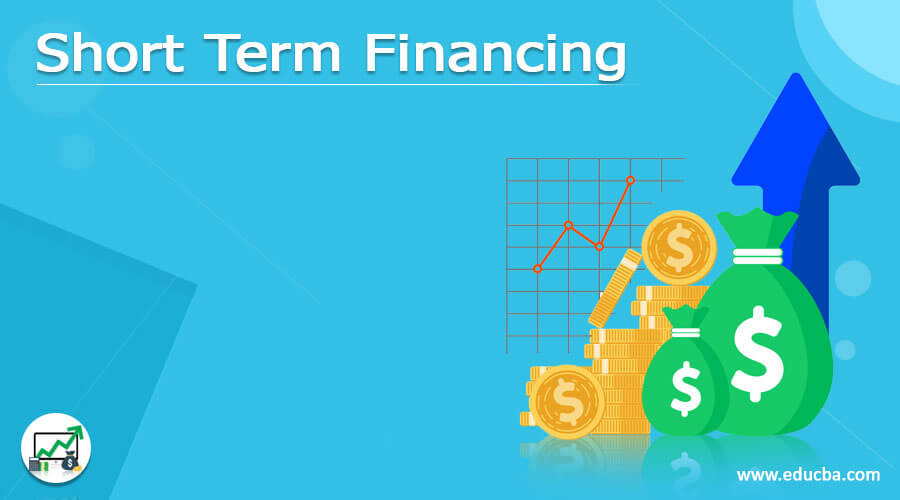What is Short-Term Financing?
The term “short-term financing” refers to funding financing requirements for a short period, usually less than a year. In business parlance, it is popular as working capital financing.
Typically, this sort of financing is because of the uneven cash flow into a business, which can be attributed to seasonality, short-term hiccups, etc. It is mainly used for financing the purchase of inventory, accounts receivables, etc. In addition, it is sometimes useful for a specific temporary short-term shortfall.
Key Takeaways
Some of the key takeaways of the article are:
- Short-term financing refers to loans expected to be paid off within a brief period, primarily between six months to one year.
- It is the right funding solution in case of a temporary cash-flow gap due to seasonality, unexpected expenses, etc.
- Its advantages include quick disbursal, low credit history emphasis, and flexibility. However, it has certain disadvantages, such as high-interest rates and adverse impacts on credit scores.
- Some common short-term financing instruments include merchant cash advances, lines of credit, payday loans, installment loans, and invoice financing.
Example of Short-Term Financing
Let us take the following example to understand the concept of short-term financing.
David is due on the 7th of every month for his previous work. It has resulted in a financial emergency for which he has to secure a short-term debt that he will be able to only after the 7th of the following month. He borrowed $1,000 for 15 days at the 12% APR. After 15 days, he will have to repay the loan and accrued interest. Since the loan is shorter, it will be short-term financing. It is an example of a payday loan.
Types of Short-Term Financing
The following are some of the most common types of short-term financing instruments:
- Merchant Cash Advance: A cash advance operates like a loan wherein the lender provides the cash the borrower needs. Each time the borrower executes a sale, a certain percentage of the proceeds goes to the lender until the cash advance is entirely paid off. The borrower makes the repayments by letting the lender access the borrower’s sales account.
- Line of Credit: It is similar to a business credit card with a pre-set credit limit. The business can tap into the line of credit when required and make monthly payments against the borrowed amount. So, the monthly payment due varies according to the line of credit accessed.
- Payday Loan: A short-term emergency payday loan can be secured relatively easily; even high street lenders offer them. This type of loan usually carries a very high rate of interest. The borrower must repay the loan amount and interest in a lump sum on payday.
- Installment Loan: It is another relatively easy-to-get short-term loan wherein the entire process is online – from approval application. Once the loan is approved, the money gets wired to the borrower’s account within minutes.
- Invoice Financing: It is against a business’s accounts receivables, i.e., invoices that are yet to be paid by the customers. When the lender pays the invoices, it collects its principal and the interest charges from the proceeds and returns the remaining to the borrower. The lender extends the loan, and the interest depends on the number of weeks that the invoices remain outstanding.
Duration of Short-Term Financing
As the name suggests, short-term loans fulfill temporary funding requirements and must be paid off quickly. In most cases, these loans get paid off within six months to a year, extending up to 18 months. Any duration longer than this term is a medium-term or long-term loan.
Importance of Short-Term Financing
Whether it is the maintenance of operations or the expansion of businesses into new phases, funding is often the most vital cog in any effective business strategy. But not all fundings are suitable for every business purpose, so choosing the right type becomes an important decision – whether to go for long-term or short-term financing. For example, when a business feels a temporary cash-flow gap due to seasonality, unexpected expenses, etc., short-term financing usually seems to be the right funding solution.
Advantages of Short-Term Financing
Some of the significant advantages of short-term financing are as follows:
- First, there is no need for a lengthy approval process, usually witnessed in other cases. Based on the lender, the borrower can access the funds within a day or two.
- Short-term loan lenders tend to put less emphasis on the credit history for loan approval, which is good for borrowers with limited or weak credit history.
- Some short-term loans offer flexibility, which is helpful for borrowers who are temporarily in a cash trap but are likely to get better financially soon.
Disadvantages of Short-Term Financing
Some of the significant disadvantages are as follows:
- First, the interest rates are often higher than that of longer-term loans, which leads to higher installments every month.
- An outstanding short-term loan increases the debt-to-income ratio, causing a severe hit to an individual’s credit score. It can damage people with good credit histories and devastate those with poor credit scores.
Conclusion
It is a handy tool for individuals as well as businesses. While it resolves emergency fund problems for individuals, it also settles business working capital needs. However, the inability to repay due to high-interest rates can have serious consequences. Therefore, analyzing the projected cash flow is advisable before opting for short-term financing.
Recommended Articles
This is a guide to Short Term Financing. We also discussed the definition, example, types, duration, importance, and advantages and disadvantages. You may also have a look at the following articles to learn more –




